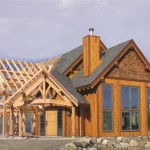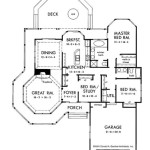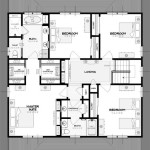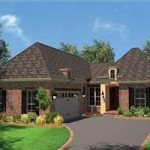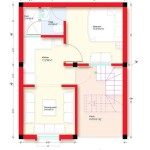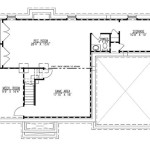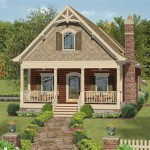Floor Plans For Luxury Homes: A Comprehensive Guide
Luxury home floor plans are more than just blueprints; they represent a lifestyle. They embody aspirations, comfort, and the pursuit of an elevated standard of living. Designing a luxury home requires careful consideration of various factors, from spatial arrangement and material selection to technological integration and personalized amenities. The floor plan serves as the foundation upon which all these elements are built, making it a critical aspect of the entire design process.
This article aims to provide a comprehensive overview of floor plans for luxury homes, exploring the key considerations, common features, and innovative trends that define this unique segment of residential architecture. We will delve into the importance of understanding client needs, optimizing space utilization, and incorporating cutting-edge technologies to create a truly exceptional living environment.
Understanding Client Needs and Lifestyle
The cornerstone of any successful luxury home floor plan is a deep understanding of the client's needs, lifestyle, and aspirations. This requires a comprehensive consultation process that goes beyond simply asking about the number of bedrooms and bathrooms. Architects and designers must engage in in-depth conversations to uncover the client's daily routines, hobbies, social activities, and long-term goals. This information will inform the design of spaces that are not only aesthetically pleasing but also functionally relevant to the client's life.
For example, a client who frequently hosts large gatherings may prioritize a spacious open-plan living area with a gourmet kitchen and seamless access to outdoor entertaining spaces. Conversely, a family with young children may prefer a more compartmentalized layout with dedicated playrooms, homework areas, and a focus on safety and accessibility. Understanding these nuances is crucial for creating a floor plan that truly reflects the client's unique personality and enhances their quality of life.
Furthermore, consideration should be given to the client's future needs. Will the home be used for aging in place? Are there plans to expand the family? Incorporating adaptable design elements, such as flexible room configurations and universal design principles, can ensure that the home remains relevant and comfortable for years to come. This foresight adds significant value to the property and demonstrates a commitment to the client's long-term well-being.
Optimizing Space Utilization and Flow
Luxury home floor plans prioritize maximizing space utilization and creating a seamless flow between different areas of the house. This involves careful consideration of room sizes, proportions, and their relationship to one another. The goal is to create a sense of spaciousness and openness while maintaining a comfortable and functional living environment.
Open-plan living areas, which combine the kitchen, dining, and living spaces into a single expansive room, are a common feature in luxury homes. This layout promotes social interaction, enhances natural light penetration, and creates a sense of grandeur. However, it is important to carefully define zones within the open space using furniture arrangements, changes in flooring materials, and subtle architectural details. This helps to maintain a sense of order and prevents the space from feeling overwhelming.
Circulation patterns are also crucial for optimizing space utilization. Hallways should be wide and well-lit, providing easy access to different areas of the house. Avoid creating dead-end corridors or cramped spaces that can detract from the overall sense of luxury. The floor plan should facilitate a natural flow of movement, allowing residents and guests to navigate the home with ease and comfort.
In addition to interior spaces, luxury home floor plans often incorporate generous outdoor living areas, such as patios, decks, and balconies. These spaces extend the living area beyond the confines of the house and provide opportunities for outdoor dining, relaxation, and entertainment. The connection between indoor and outdoor spaces should be seamless, with large windows and sliding doors that allow for natural light and ventilation.
Incorporating Cutting-Edge Technologies and Smart Home Automation
Modern luxury homes are increasingly incorporating cutting-edge technologies and smart home automation systems to enhance convenience, comfort, and security. These technologies can be seamlessly integrated into the floor plan, creating a truly connected and intelligent living environment.
Smart lighting systems allow residents to control the lighting throughout the house from a central control panel or mobile device. This includes adjusting the brightness, color temperature, and even creating custom lighting scenes for different occasions. Automated shades and blinds can be programmed to open and close at specific times of day, optimizing natural light and energy efficiency.
Home theatre systems, complete with surround sound and large screens, are a popular feature in luxury homes. Dedicated home theatre rooms can be designed with acoustic treatments and comfortable seating to create an immersive viewing experience. Similarly, smart home security systems, including surveillance cameras, motion detectors, and alarm systems, can provide peace of mind and enhance the safety of the residents.
Climate control systems can also be integrated into the floor plan, allowing residents to adjust the temperature in different zones of the house. This can be particularly useful for large homes with multiple floors or wings. Smart thermostats can learn the residents' preferences and automatically adjust the temperature to optimize comfort and energy efficiency.
Furthermore, the floor plan should accommodate the necessary wiring and infrastructure for these technologies. This includes providing ample power outlets, network cabling, and dedicated equipment rooms. Careful planning and coordination with technology specialists are essential to ensure that these systems are seamlessly integrated into the design and function effectively.
Privacy and Zoning Considerations
Privacy is a paramount concern in luxury home design. Floor plans must carefully consider the separation of public and private spaces, ensuring that residents have ample opportunities for both social interaction and personal retreat. Zoning strategies play a crucial role in achieving this balance.
Public areas, such as the living room, dining room, and kitchen, are typically located near the entrance of the house, providing easy access for guests. These spaces are designed to be open and inviting, encouraging social interaction and entertaining. Conversely, private areas, such as bedrooms, bathrooms, and home offices, are typically located in more secluded areas of the house, away from the main traffic flow.
The master suite is often considered the most private area of the house, designed as a sanctuary for the homeowners. It typically includes a spacious bedroom, a luxurious bathroom with a soaking tub and separate shower, a walk-in closet, and sometimes even a private sitting area or balcony. The master suite should be strategically located to maximize privacy and minimize noise disturbance.
Guest suites are another important consideration in luxury home floor plans. These suites should be designed to provide guests with a comfortable and private space to stay, complete with their own bedroom, bathroom, and possibly even a kitchenette. Ideally, guest suites should be located away from the main living areas to ensure privacy for both the guests and the homeowners.
In addition to the separation of public and private spaces, the floor plan should also consider the acoustic privacy of different areas of the house. This can be achieved through the use of soundproofing materials, strategic placement of walls and doors, and careful consideration of the layout of mechanical systems. The goal is to create a peaceful and quiet environment where residents can relax and unwind without being disturbed by noise from other areas of the house.
Sustainability and Energy Efficiency
Sustainability and energy efficiency are increasingly important considerations in luxury home design. Clients are becoming more aware of the environmental impact of their homes and are seeking ways to reduce their carbon footprint and lower their energy bills. Floor plans can play a significant role in achieving these goals.
Passive solar design principles can be incorporated into the floor plan to maximize natural light and minimize the need for artificial lighting and heating. This involves orienting the house to take advantage of the sun's path, using large windows to capture sunlight, and incorporating shading devices to prevent overheating. Thermal mass materials, such as concrete or stone, can be used to store heat during the day and release it at night, helping to regulate the temperature of the house.
Energy-efficient appliances and fixtures can also be incorporated into the floor plan. This includes using LED lighting, high-efficiency HVAC systems, and water-saving plumbing fixtures. Smart home automation systems can be used to monitor and control energy consumption, optimizing efficiency and reducing waste.
The selection of building materials can also have a significant impact on the sustainability of the home. Using recycled or sustainable materials, such as reclaimed wood or bamboo flooring, can reduce the environmental impact of construction. Low-VOC paints and finishes can improve indoor air quality and reduce the risk of harmful emissions.
Furthermore, the floor plan should consider the water management of the property. Rainwater harvesting systems can be used to collect rainwater for irrigation or other non-potable uses. Drought-tolerant landscaping can reduce the need for irrigation and conserve water. Greywater recycling systems can be used to treat and reuse wastewater from showers and sinks.
Accessibility and Universal Design Principles
Accessibility and universal design principles should be incorporated into luxury home floor plans to ensure that the home is usable by people of all ages and abilities. This includes designing spaces that are easily navigable for people with mobility impairments, vision impairments, or hearing impairments.
Wide doorways and hallways are essential for wheelchair accessibility. Ramps or elevators can be used to provide access to different levels of the house. Grab bars can be installed in bathrooms to assist with mobility. Lever-style door handles are easier to operate than traditional doorknobs.
Kitchens and bathrooms can be designed with adjustable-height countertops and sinks to accommodate people of different heights. Roll-under sinks allow wheelchair users to access the sink without having to transfer. Walk-in showers with no curbs eliminate tripping hazards.
Lighting should be carefully considered to ensure that spaces are well-lit and easy to navigate. High-contrast color schemes can help people with vision impairments to distinguish between different surfaces. Tactile signage can provide information for people who are blind or visually impaired.
Incorporating these design elements can make a luxury home more comfortable and accessible for everyone, regardless of their abilities. This not only benefits the current residents but also increases the resale value of the property.
The Importance of Professional Expertise
Designing a luxury home floor plan requires a high level of expertise and experience. Architects and designers who specialize in luxury residential design have the knowledge and skills to create custom floor plans that meet the unique needs and aspirations of their clients.
A professional architect can help clients to visualize the floor plan in three dimensions, using renderings and virtual reality models. They can also provide guidance on site selection, building codes, and zoning regulations. A skilled interior designer can help clients to select finishes, furnishings, and lighting that complement the floor plan and create a cohesive aesthetic.
Collaboration between the architect, designer, and contractor is essential for ensuring that the floor plan is executed successfully. Regular communication and coordination can help to prevent problems and ensure that the project stays on schedule and within budget.
Investing in professional expertise is well worth the cost, as it can ensure that the luxury home floor plan is not only aesthetically pleasing but also functional, sustainable, and accessible. A well-designed floor plan can significantly enhance the value of the property and improve the quality of life for the residents.

Large Luxury Home Plans With S Houseplans Blog Com

1st Floor Image Of Luxury 5 Bedroom Mediterranean Style House Plan 8860 Plans Mansion

Lochinvar House Plan Mansion Floor Luxury Plans Blueprints

Elegant And Functional Luxury House Plans Houseplans Blog Com

8 Small Luxury House Plans We Love Blog Eplans Com

Siena 3br 3b Luxury Home Floor Plan Villas Of Chenal

Small Luxury House Plans Houseplans Blog Com

Luxury House Floor Plans Mansion Plan

8 Small Luxury House Plans We Love Blog Eplans Com

Luxury House Plans Build Your Dream Home

